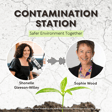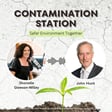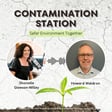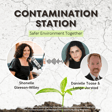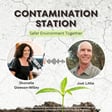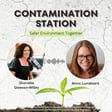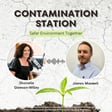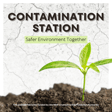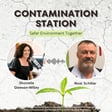
Planning, PFAS, and Public Trust: Andrew Mitchell on Best Practices for Contaminated Land Management
Andrew Mitchell is an environmental engineer with over 25 years of experience in regulation, policy, emergency management, pollution incidents and site contamination.
Andrew currently leads the national environment team for ADE Consulting Group. His previous roles have included being a regulator of contaminated land, funding the clean-up of derelict sites, developing policy and preventative approaches for contamination, managing high-profile remediation projects, leading the NSW EPA in incident and emergency response and guiding the Department of Defence in investigating and managing PFAS contamination.
Through this work he has developed significant expertise in negotiation, influencing, analysis of incentives, community consultation and risk communication. He is a collaborative leader experienced in managing change processes and also a subject matter expert in the fields of risk assessment, contaminated land, hazardous chemicals and remediation.
In this episode Andrew reflects on key shifts in contaminated land management, including the evolution of NSW’s planning framework previously known as SEPP 55. He explains how what he calls a “co-regulation” model has enabled councils, consultants, and auditors to resolve contamination more efficiently through redevelopment processes.
He also highlights future risks associated with hazmat in infill housing, particularly the demolition of fibro homes, and urges stronger collaboration between councils and state government to ensure these developments proceed safely.
Drawing on decades of experience, Andrew outlines practical challenges and opportunities councils face in managing PFAS. He emphasizes the importance of transparency and early engagement with communities, referencing Peter Sandman’s Responding to Community Outrage as a valuable tool for navigating emotionally charged issues.
Andrew encourages local governments to assess their exposure across regulatory, financial, human health, environmental, and reputational dimensions—and to ensure these risks are communicated clearly to executives and councillors. He also flags the operational blind spots in areas like landfills and recycled water use, where well-intended sustainability measures can trigger costly consequences under zero-tolerance testing thresholds.
With NEMP 3.0 growing in size and complexity, Andrew recommends councils begin with the six-page summary of key changes and supplement their knowledge with up-to-date technical resources such as the ITRC’s PFAS training.
-----
Are you a local NSW council member looking for more resources like this?
You are invited to join the Local Government NSW Contaminated Land Network!
Local Government NSW (LGNSW) hosts a free, online network for council staff on the topic of contaminated land. The network includes an online forum for collaboration, information sharing and announcements about contaminated land regulation, guidance and training opportunities. Monthly meetings are held on themes that were set by the network participants, with presentations from regulators, technical experts, and case studies by councils.
Since the contaminated land network commenced in December 2023, more than 50% of NSW councils have joined, with over 200 participants. Feedback shows that councils are benefitting greatly from the network meetings and discussion on the platform, and we are pleased to invite you to join us.
To join the network, please use this link: https://lgsa.wufoo.com/forms/w1rf0os910rxyl6/
The project also comprises a webpage with up-to-date information and links to resources, which can be accessed here.
We hope to see you on the network soon!


